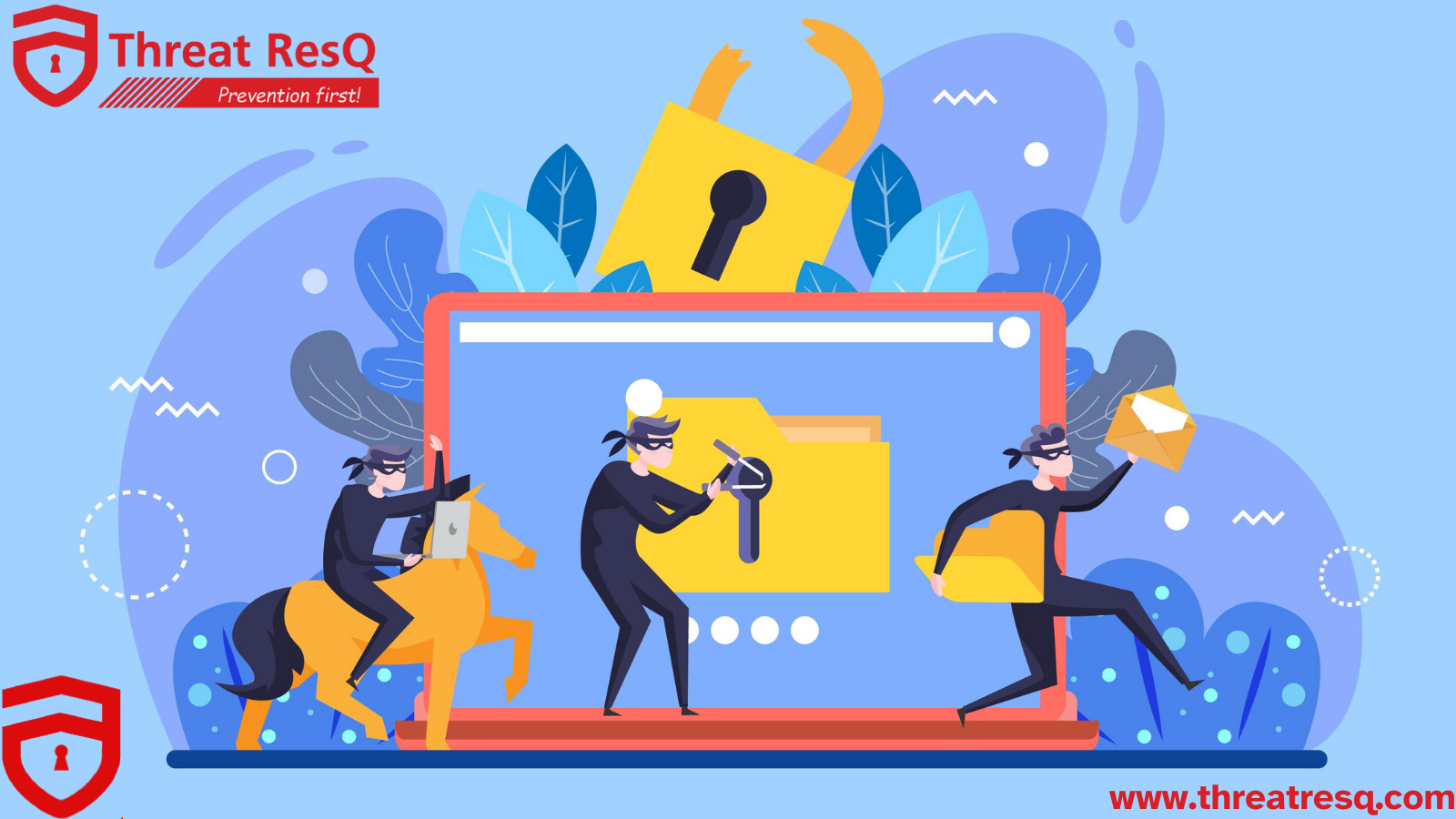- Join our company
- Email: info@threatresq.com
- Phone: (+91) 9910016361



Ransomware attacks continue to be a major concern for organizations worldwide, resulting in financial losses and data breaches
In this blog, we explore key strategies to protect against ransomware and how ThreatResQ’s advanced cybersecurity solutions help businesses strengthen their defenses.
By implementing strong security measures and leveraging ThreatResQ’s expertise, organizations can effectively reduce ransomware-related risks and safeguard their critical data.
Ransomware is a type of malware that encrypts data, including images, videos, and essential documents owned by victims. It later helps the attackers extort a ransom in exchange for a key to decrypt the data and make it accessible to victims.
ThreatResQ provides awareness about the evolving nature of ransomware attacks, including the use of advanced techniques such as fileless ransomware.
As per a recent report from Zscaler, Incidents of Ransomware attacks grew by more than 37% in 2023. The average ransom paid by businesses exceeded $100,000 during these attacks.
Ransomware attacks organizations and holds digital assets or systems hostage until a ransom is paid. This poses a severe threat to organizations worldwide, not only in the financial aspect but also in the operational and reputational aspects.
Ransomware attacks always aim at demanding a huge ransom amount, which forces organizations to decide whether to pay the ransom or face the loss/leak of critical data. Also, there’s no guarantee that after paying the threat actors, they will provide the decryption key or that the data will be recovered as it was.
Ransomware attacks mainly aim at compromising and encrypting critical systems. This disrupts the organization’s ongoing operations as if the critical systems are encrypted, day-to-day functions stop completely. Also, the downtime required for data recovery and investigation can incur a great loss of money for organizations.
Ransomware attacks can damage an organization’s reputation in the market and, especially, the customer’s trust. Such an attack on the organization, if successful, can decrease the customer’s trust and loyalty. Clients will become hesitant to do business with organizations that can’t safeguard their potential data and digital assets.
Endpoints are devices that can connect to a network and interact with its resources. Endpoints are crucial because they let people in the organization do their work. Lack of proper authentication, unsecure remote access, lack of intrusion detection systems, Phishing attacks, etc. are some of the common weaknesses in endpoint security.
So, Securing endpoints is crucial in preventing ransomware attacks. Endpoints can be secured in various ways, including:
ThreatResQ’s endpoint security solutions offer comprehensive protection by employing advanced threat detection mechanisms, behavior-based analysis, and real-time monitoring.
Data backups are a lifesaver when ransomware attacks occur in an organization. It allows you to restore the systems without paying the ransom. It also helps you continue with the operations with minimal downtime.
Having secure backup and recovery mechanisms is essential in mitigating the impact of ransomware attacks. Create a consistent backup routine and verify the integrity of backups to make sure they are not corrupted.
Organizations Should apply the 3-2-1 Backup rule, i.e.
a. Maintain three copies of your data;
b. Stored in two different formats with
c. one copy stored offsite
ThreatResQ provides robust backup solutions that store data in secure, off-site locations, ensuring its availability even if the primary systems are compromised.
Advanced threat intelligence includes collecting, analyzing, and interpreting data to identify emerging threats. It helps to proactively counteract threats. Early detection of ransomware is possible through behavioral analysis and anomaly detection.
Through Threat Intelligence’s early detection, organizations can prevent and mitigate in the following ways:
ThreatResQ’s advanced threat intelligence capabilities enable organizations to detect and counter ransomware attacks in their early stages. By monitoring signs of compromise, analyzing network traffic, and leveraging threat intelligence data, ThreatResQ helps organizations identify ransomware, enabling a faster response.
Human error plays a significant role in ransomware attacks. Educating employees is a powerful defense against ransomware. Organizations should emphasize creating awareness about phishing and social engineering attacks through simulated phishing tests and regular security-related training on evolving cyberattacks and defenses.
ThreatResQ emphasizes the importance of employee education and awareness in preventing such incidents. By conducting regular cybersecurity training, raising awareness about phishing emails, and promoting a culture of security, organizations can improve their employees’ awareness and become the first line of defense against ransomware attacks.
Creating an effective incident response plan includes having a designated team with defined responsibilities. Incident responders perform roles, like monitoring actively, isolating the machines, investigating the affected ones, removing the ransomware, and submitting a report about the whole incident to the management and stakeholders.
After the incident, a recovery plan should be followed to restore the data from the backup. Restoring critical systems and their data should be the priority to avoid excess downtime. Backup data should also be checked for malware before being used for restoration.
ThreatResQ’s incident response services assist organizations in quickly responding to the incident, containing the damage, and recovering systems.
A well-known Antivirus and Anti-malware solution, Backup and disaster recovery tools, Email gateways for filtering emails, SIEM tools for detecting unusual activities, etc.
Yes, always use updated applications, and don’t trust random sources on the internet for receiving or sharing documents.
The rules state that there should be Three copies of your data, Two copies stored in different formats and one copy stored offsite (ex., in cloud storage).
The first ransomware was AIDS (Trojan horse), A DOS trojan horse by Dr. Joseph Popp in 1989.
According to Zscaler’s recent report, An average of $5.3 million is demanded in 2023.